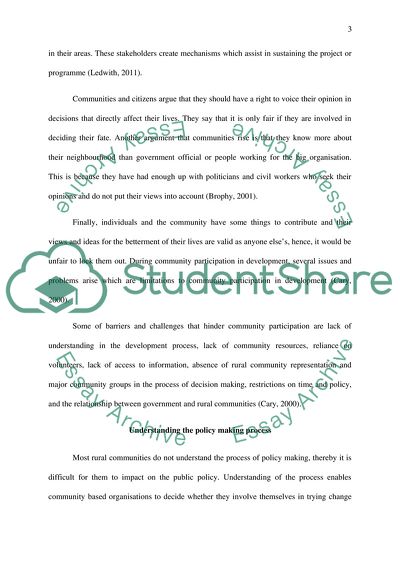Cite this document
(Community Participation in Development Coursework, n.d.)
Community Participation in Development Coursework. https://studentshare.org/sociology/1773176-outline-the-arguments-for-community-participation-in-development-what-are-its-limitations-and-how-can-policy-help-to-overcome-them
Community Participation in Development Coursework. https://studentshare.org/sociology/1773176-outline-the-arguments-for-community-participation-in-development-what-are-its-limitations-and-how-can-policy-help-to-overcome-them
(Community Participation in Development Coursework)
Community Participation in Development Coursework. https://studentshare.org/sociology/1773176-outline-the-arguments-for-community-participation-in-development-what-are-its-limitations-and-how-can-policy-help-to-overcome-them.
Community Participation in Development Coursework. https://studentshare.org/sociology/1773176-outline-the-arguments-for-community-participation-in-development-what-are-its-limitations-and-how-can-policy-help-to-overcome-them.
“Community Participation in Development Coursework”. https://studentshare.org/sociology/1773176-outline-the-arguments-for-community-participation-in-development-what-are-its-limitations-and-how-can-policy-help-to-overcome-them.


